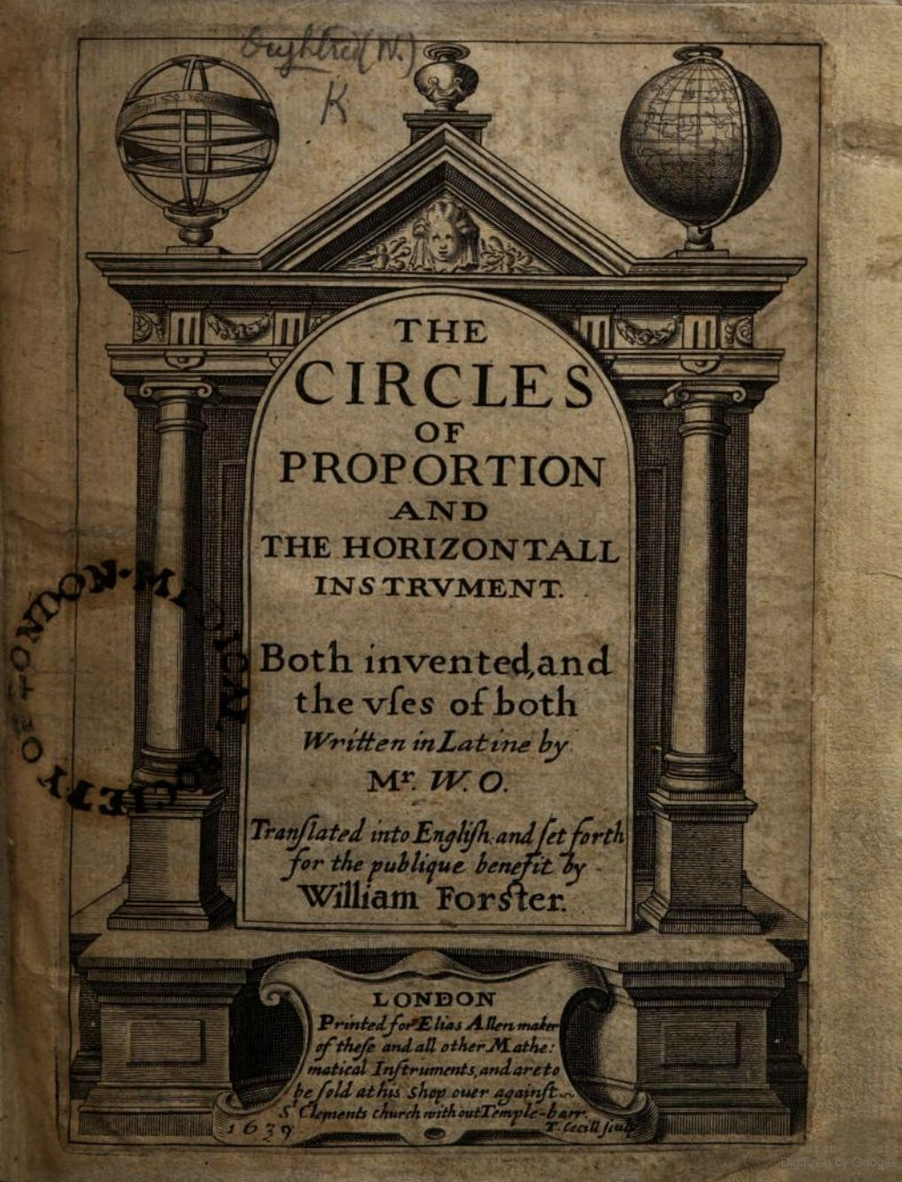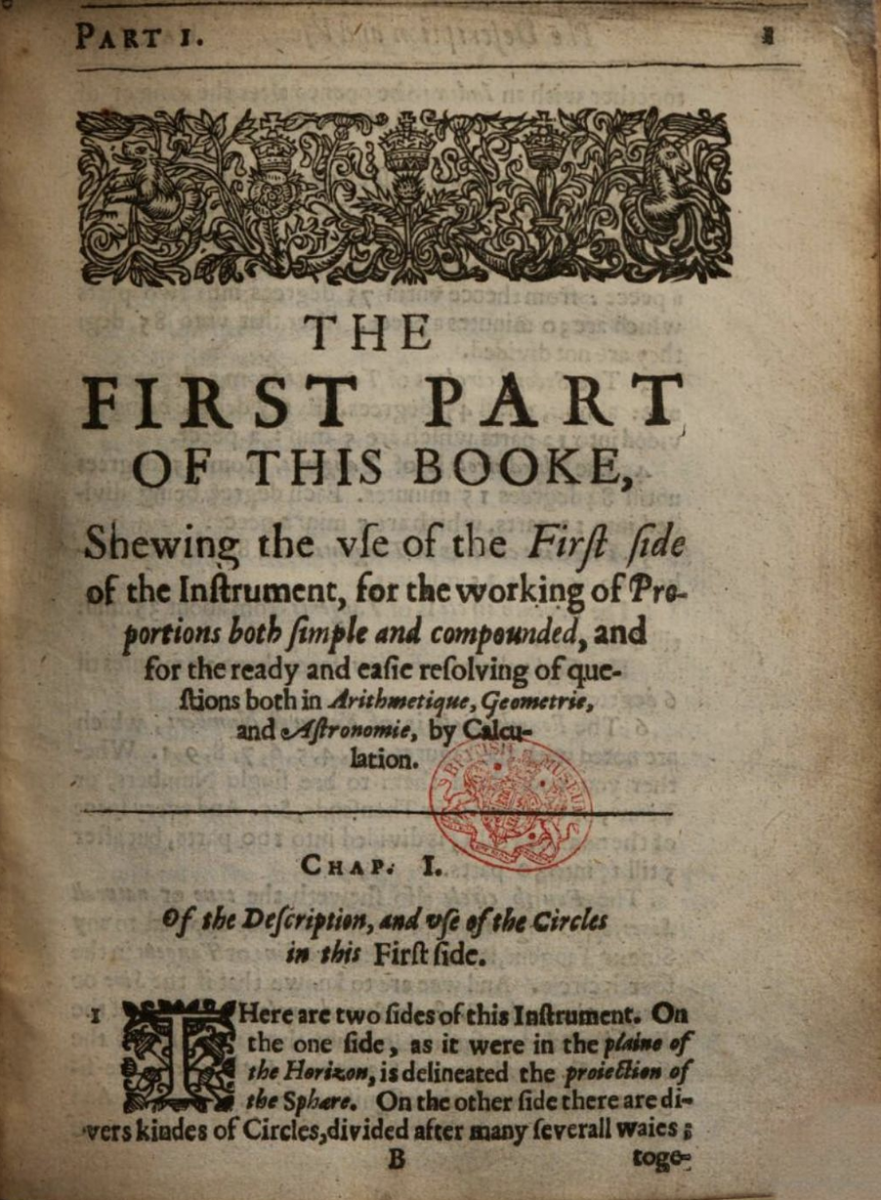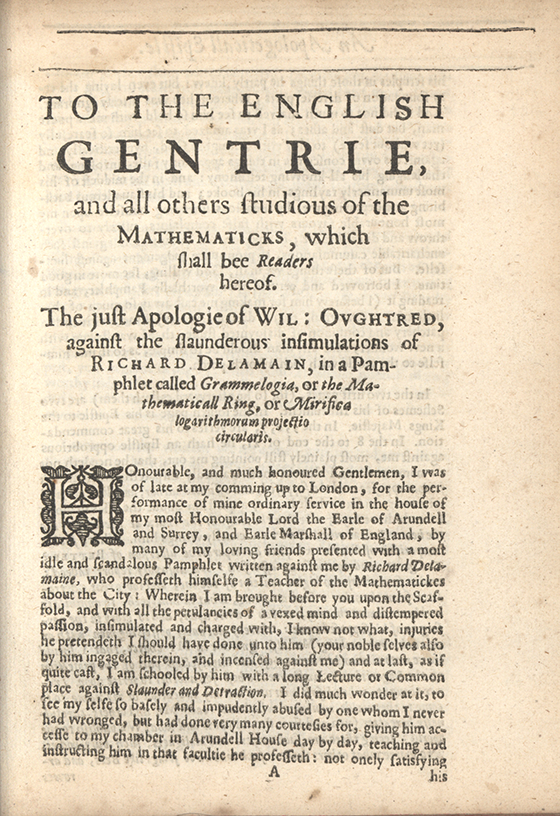- About MAA
- Membership
- MAA Publications
- Periodicals
- Blogs
- MAA Book Series
- MAA Press (an imprint of the AMS)
- MAA Notes
- MAA Reviews
- Mathematical Communication
- Information for Libraries
- Author Resources
- Advertise with MAA
- Meetings
- Competitions
- Programs
- Communities
- MAA Sections
- SIGMAA
- MAA Connect
- Students
- MAA Awards
- Awards Booklets
- Writing Awards
- Teaching Awards
- Service Awards
- Research Awards
- Lecture Awards
- Putnam Competition Individual and Team Winners
- D. E. Shaw Group AMC 8 Awards & Certificates
- Maryam Mirzakhani AMC 10 A Awards & Certificates
- Two Sigma AMC 10 B Awards & Certificates
- Jane Street AMC 12 A Awards & Certificates
- Akamai AMC 12 B Awards & Certificates
- High School Teachers
- News
You are here
Mathematical Treasure: Oughtred's Defense of His Slide Rule
The best known and most influential publication of the English mathematician William Oughtred (1574–1660) was his Clavis Mathematicae (The Key to the Mathematics), originally published in 1631 with the title Arithmeticae in Numeris et Speciebus. This arithmetic and algebra text went through several editions in both Latin and English. You can see the original 1631 edition and two other editions in Convergence.
Oughtred may be even better known for his invention of the circular slide rule—or “Mathematicall Ring”—which he described in an unpublished Latin manuscript. William Forster, one of Oughtred’s students, received permission from Oughtred in 1630 to translate this manuscript into English, and the treatise The Circles of Proportion … invented by … Mr. William Oughtred was first published in 1632.



The images above are from the full digitization of the copy owned by the British Library available from GoogleBooks.
The circular slide rule became the subject of a heated dispute as to its creator. Richard Delamain (1600–1644), another student of Oughtred, introduced the device to King Charles I in 1629. Impressed with this calculator, the King appointed Delamain to the position of royal engineer. William Oughtred, however, declared that he had developed the slide rule and that Delamain had copied the idea from him. As part of the dispute, Oughtred published a pamphlet addressed to the English public defending his position. Its first page is shown below:

The image above was obtained through the courtesy of the Erwin Tomash Library on the History of Computing, Charles Babbage Institute, University of Minnesota. This pamphlet is also included in the GoogleBooks copy described further above.
Erwin Tomash (1921–2012) was a pioneering computer scientist, who helped launch the U.S. computer industry from the 1940s onward. During the 1970s he became interested in the history of computer science, and founded the Charles Babbage Society, and its research arm, the Charles Babbage Institute. The Institute, an archive and research center, is housed at the University of Minnesota. Its Erwin Tomash Library on the History of Computing began with Tomash’s 2009 donation to the Institute of much of his own collection of rare books from the history of mathematics and computing. (Source: Jeffrey R. Yost, Computer Industry Pioneer: Erwin Tomash (1921–2012), IEEE Annals of the History of Computing, April-June 2013, 4–7.)
Frank J. Swetz (The Pennsylvania State University), "Mathematical Treasure: Oughtred's Defense of His Slide Rule," Convergence (August 2018)




